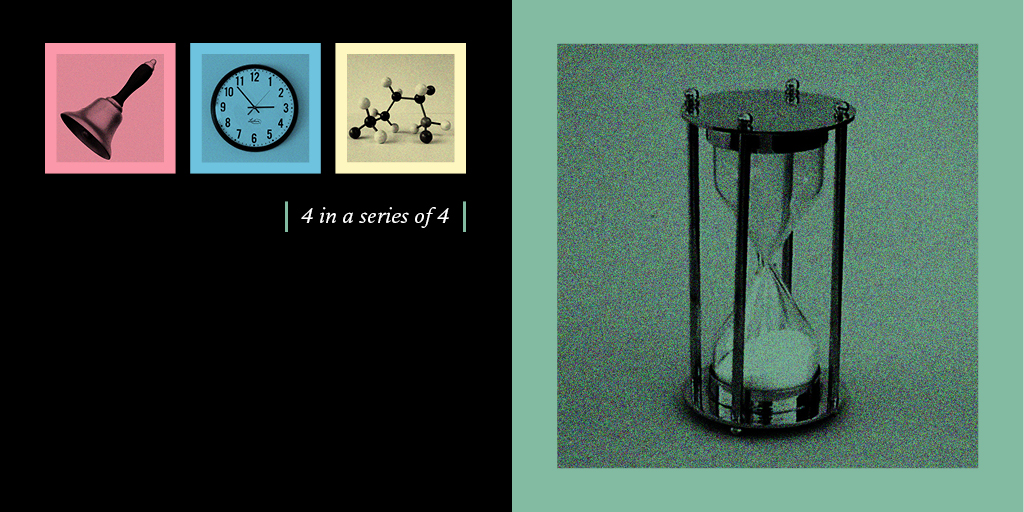I remember sitting in a movie theater with my children in December of 2003, watching the final minutes of the third film in The Lord of the Rings trilogy, and feeling a deep sense of closure as Gollum and the ring toppled into Mount Doom, and Frodo and Sam were rescued by the eagles. What a glorious finish to an epic film series, based on a book series that I loved as well.
Only it wasn’t the finish. Once the ring melted we got to see the members of the original fellowship united again in the land of the elves. OK, I get that. Feel-good closure. I prepared to get up and leave. Oh, wait, another scene: The hobbits receive public recognition for their heroism. That’s nice. Time to go. Not yet. Now we have to follow the hobbits back home. Finished now? Nope. Sam gets married.
And on and on it seemed to go. I believe I prepared to get up out of my seat five times before that film finally ended. A series that could have finished with a nice dramatic punch instead lurched along wrapping up every possible thread that had loosened over the past nine hours of film.
All of which reminds me of nothing more than your typical college classroom.
In my experience — having observed many dozens of college courses over the past two decades — most faculty members eye the final minutes of class as an opportunity to cram in eight more points before students exit, or to say three more things that just occurred to us about the day’s material, or to call out as many reminders as possible about upcoming deadlines, next week’s exam, or tomorrow’s homework.
At the same time, we complain when students start to pack their bags before class ends. But why should we be surprised by that reaction when our class slides messily to a conclusion? We’re still trying to teach while students’ minds — and sometimes their bodies — are headed out the door. We make little or no effort to put a clear stamp on the final minutes of class, which leads to students eyeing the clock and leaving according to the dictates of the minute hand rather than the logic of the class period.
When it comes to the deliberate construction of our course periods, we can do better. Small changes to our teaching — such as the way we approach the closing minutes of class — can make a big difference. Like most of my fellow professors, I know I could be doing many things better in my teaching. But the prospect of change can be overwhelming. Fortunately, a substantial body of research on learning in higher education offers us strategies for improving our teaching in ways that don’t require a major overhaul, and yet that have the power to boost the learning, motivation and mind-set of our students in substantive ways. Let us turn to ways we can make better use of the final five minutes of class.
The minute paper. You can’t wade very far into the literature of teaching and learning in higher education without encountering some version of the Minute Paper [pdf], a technique made justly famous by Thomas A. Angelo and K. Patricia Cross in their book Classroom Assessment Techniques: A Handbook for College Teachers. The Minute Paper comes in many variations, but the simplest one involves wrapping up the formal class period a few minutes early and posing two questions to your students:
- What was the most important thing you learned today?
- What question still remains in your mind?
Taken together, those two questions accomplish multiple objectives. The first one not only requires students to remember something from class and articulate it in their own words (more about that in a moment), but it also requires them to do some quick thinking. They have to reflect on the material and make a judgment about the main point of that day’s class.
The second question encourages them to probe their own minds and consider what they haven’t truly understood. Most of us are infected by what learning theorists sometimes call “illusions of fluency,” which means that we believe we have obtained mastery over something when we truly have not. To answer the second question, students have to decide where confusion or weaknesses remain in their own comprehension of the day’s material.
On my campus, most students do not bring laptops to class, so I might ask them to answer those two questions on a half-sheet of paper. Reading their responses, even if I don’t grade them, will give me a quick picture of how well the class went. If everyone writes down as the most important point of the day a throwaway example I gave, I know I have some work to do. Likewise if everyone expresses the same question in the second part of their answer, I know how I have to start the next class. But even if I don’t collect what they write, and simply stroll around and ensure pens are moving on paper, students will still benefit from some retrieval and reflection at the end of class.
If students in your classes are on various electronic devices, you might create a discussion thread in your course-management system and ask them to post their responses to these questions at the end of every class period. In this model students can read each other’s responses, and you can throw the thread onto the screen at the beginning of the next class period to highlight answers that either nicely captured the main point of the previous class or raised questions that need answering.
Closing connections. If we want students to obtain mastery and expertise in our subjects, they need to be capable of making their own connections between what they are learning and the world around them — current events, campus debates, personal experiences. The last five minutes of class represent an ideal opportunity for students to use the course material from that day and brainstorm some new connections.
Most faculty members seed such connections throughout our lectures. The other day, for instance, I used a Taylor Swift song to introduce students to the dramatic monologues of Robert Browning. In offering such examples, we can model the sorts of connections we expect of students.
Finish the last class of the week five minutes early, and tell students that they can leave when they have identified five ways in which the day’s material appears in contexts outside of the classroom. You’ll be amazed at how quickly they can come up with examples when this activity stands between them and the dining hall.
In my class period on Browning’s monologues, for example, I might ask students to list five popular songs in which the “speaker” clearly does not represent the voice of the singer. In a marketing class on the role of packaging you might ask students to give you five examples of distinctive product packaging that spring to mind. You can write them on the board or have students post the examples to a course website. Make it three items instead. Or take 10 minutes instead of five. Vary according to your taste and classroom.
The metacognitive five. We have increasing evidence from the learning sciences that students engage in poor study strategies. Likewise, research shows that most people are plagued by the illusions of fluency. The solution on both fronts is better metacognition — that is, a clearer understanding of our own learning. What if all of us worked together deliberately to achieve that?
For example, we have excellent evidence that students remember material better when they test themselves and try to retrieve information from their own minds. And yet most students still study by reviewing their notes over and over again — probably the least-effective study strategy they can employ. The final five minutes of class can provide a quick opportunity to let students know how best to prepare for their next assessment, based on the science of learning and on your experience as an expert learner.
Before the midterm, I asked students to take two minutes and write down for me how they studied for the test. When I compared what they said with the exam scores, the evidence couldn’t have been clearer: Low-performing students used phrases like “reviewed my notes” and “reread the poems”; the students who aced the exam said things like “wrote an outline,” “rewrote my notes,” “organized a timeline,” “tested myself,” and “created flashcards.” I made a slide with a side-by-side comparison of the two columns, and spent five minutes of class showing students the differences. They’ll see that slide again in the last five minutes of class just before the next exam.
Imagine what a difference we could make if we all took five minutes — even just a few times during the semester — to offer students the opportunity to reflect on their learning habits. We could inform their choices with some simple research, and inspire them to make a change. One five-minute session in one course might not mean much, but dozens of such sessions across a student’s college education would add up.
Close the loop. Finally, go back to any of the strategies I introduced in my recent column on the first five minutes of class and see if the suggestions can help you formulate a strategy for those final five minutes. If you began class with a few questions, put them back up on screen and have students use what they have learned that day to formulate their own answers. If you opened by asking students to tell you what they learned in the previous class, close by having them tell you what they learned in this class. Or if you started by soliciting their prior knowledge on the subject, close by having them explain how today’s class confirmed, enhanced, or contradicted what they knew before.
We have such a limited amount of time with students — sometimes just a few hours a week for 12 or 15 weeks. Within that narrow window, five minutes well-spent at the end of class can make a difference.
James M. Lang is a professor of English and director of the Center for Teaching Excellence at Assumption College, in Worcester, Mass. His new book, Small Teaching: Everyday Lessons From the Science of Learning, was published in March 2016. Follow him on Twitter at @LangOnCourse.
This content was originally published on The Chronicle of Higher Education.



